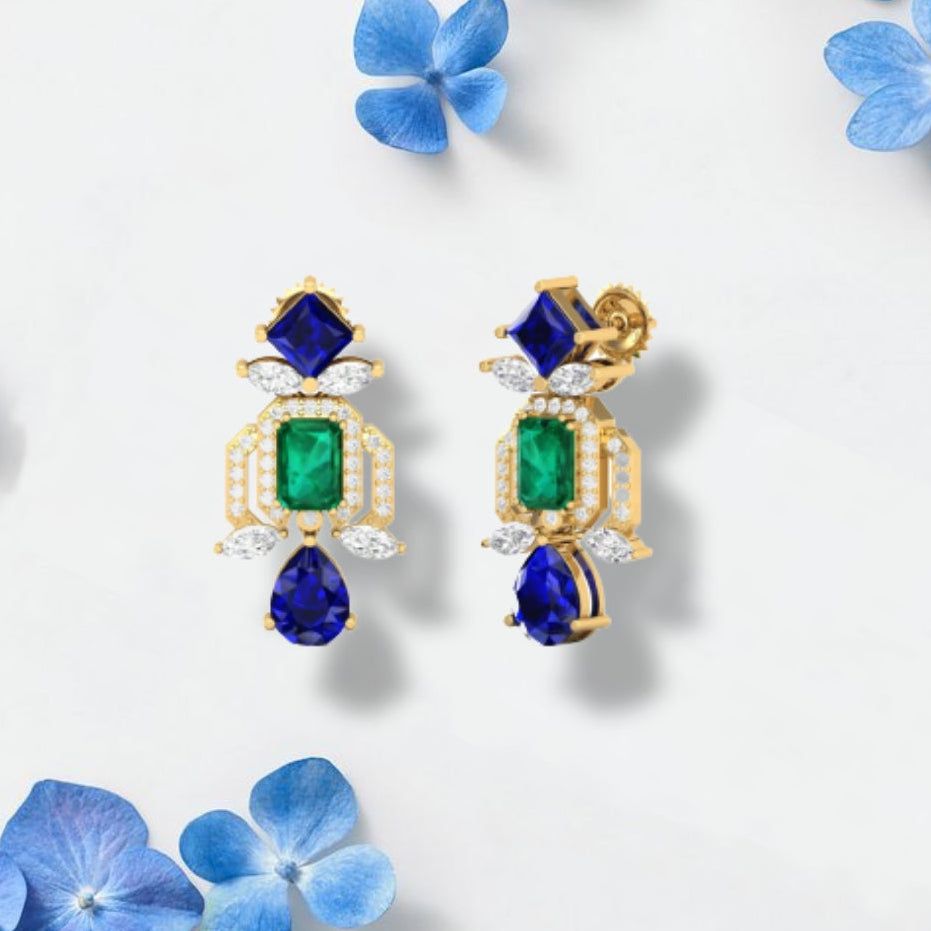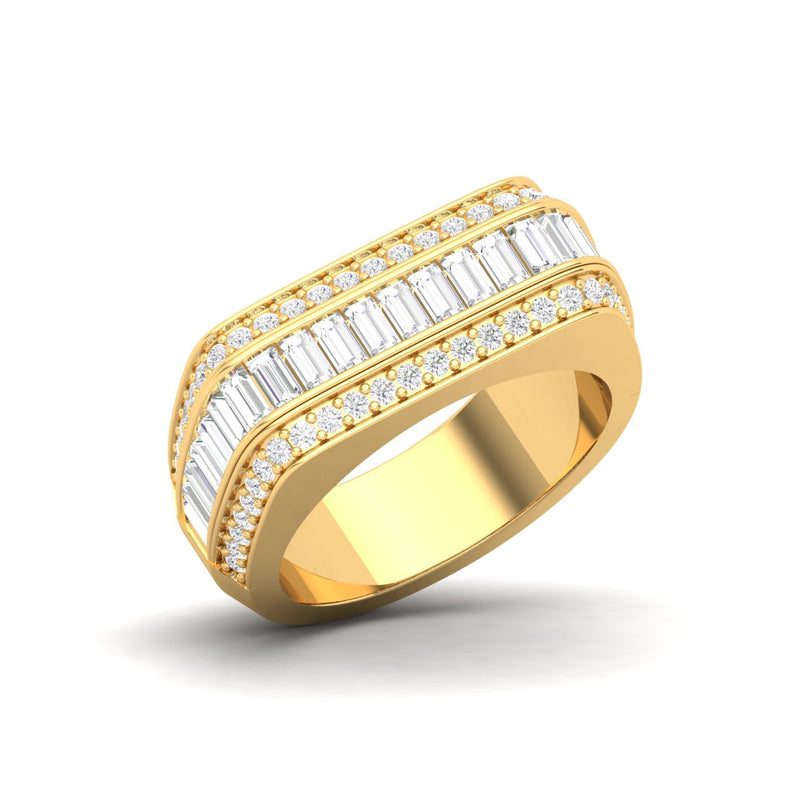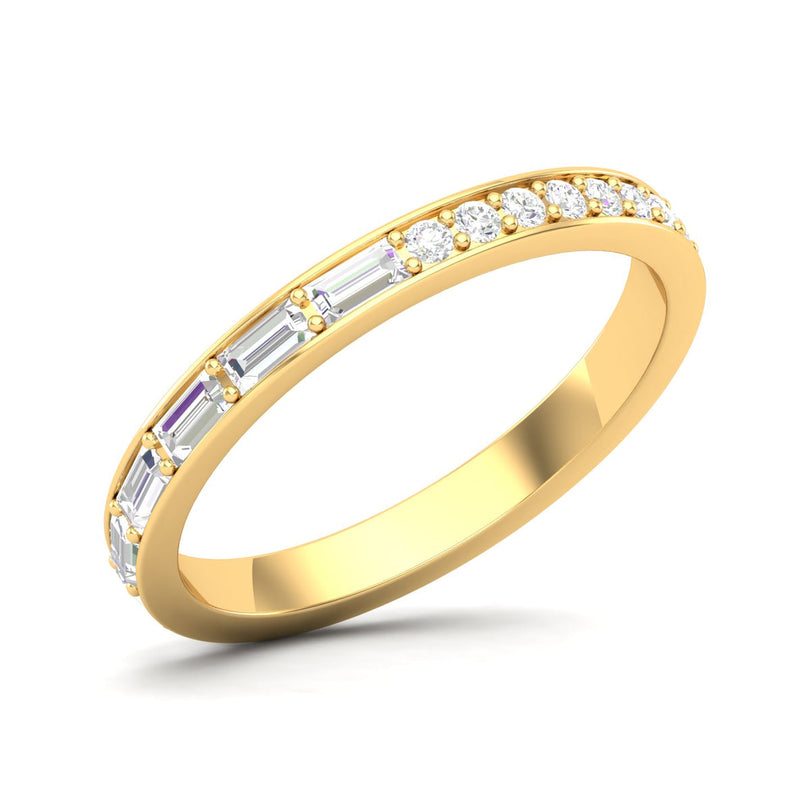Pearls are the only gemstones created by living creatures. Born from the depths of the sea, they are the result of a remarkable process of nature's artistry. A pearl begins its journey as a tiny irritant—a grain of sand, a parasite, or even a microscopic organism—that finds its way into the soft tissue of an oyster or mollusk. In response, the creature secretes a soothing substance known as nacre, layer upon layer, to coat the intruder and create a lustrous pearl. It is this natural creation process that lends pearls their unique character and charm. Their subtle hues, ranging from creamy whites to shimmering pinks, soft blues, and even deep blacks, evoke a sense of elegance and purity. Each pearl tells a story, a testament to its journey through the nurturing embrace of the oyster. No two pearls are alike, making them as rare and precious as the moments they symbolize.
Overview
As the ground warms up in the summer, June appears with its vivacious vitality and flowering beauty. The prestigious birthstone for this month, pearls command attention as one of the many miracles it provides, capturing emotions with their heavenly light and ageless grace. Pearls emit a delicate, luminous light that captures the spirit of the season, just like the warm June sun.
As the only biological gems, pearls are a unique example of nature's artistic brilliance in the world of gemstones. Since they were first discovered in the ocean's dimensions, pearls have enchanted people with their incomparable splendor and subtle appeal. Pearls provide a sense of pristine purity and tranquility thanks to their milky white shine, which is reminiscent of moonlight evenings.
As the birthstone for June, pearls represent something more than just beauty. They are thought to represent unity, romance, and pleasure and represent healthy relationships and psychological health. June babies frequently have the fortitude and elegance to turn obstacles in life into something gorgeous, much as a pearl develops from irritation within an oyster's shell.
As a sign of wealth and opulence throughout history, pearls have been prized. Ancient civilizations adored these brilliant stones as symbols of riches and prestige, especially the Greeks and Romans. The nobility's attire and accessories in Renaissance Europe were embellished with pearls, which gave them an aura of elegance and regality. Pearls are still prized as timeless and adaptable jewelry, adorning the wrists, necks, and ears of fashion-conscious people today.

Symbolism
Pearls have long been prized in various societies throughout mankind. They were sought by monarchs and only available to the elite in antiquity. Crowns, scepters, and jewelry belonging to kings and aristocratic families were embellished with their royal presence to denote their position, riches, and power. The obsession with pearls peaked during the Renaissance when their extravagance adorned royal clothing and celebrated painters' canvases.
Pearls have a long history that is entwined with stories and legends in addition to their sumptuous connotations. Pearls are frequently depicted in myths from numerous cultures as riches given to humanity by ethereal creatures of the water as presents from the sea. While Chinese folklore depicted pearls as emblems of knowledge and awakening, ancient Greeks thought that pearls were the weeping tears of the gods. Pearls have knitted themselves into the fabric of human creativity, from the legends of the Arabian nights to the mythological worlds of the Pacific islands.
Pearls' appeal moved from luxury to grace as time went on, and they were more widely available to a wider range of people. Pearls are now a mainstay of classic style in the current day. They seamlessly go with a variety of fashions, from the traditional elegance of an array of pearls decorating a delicate neck to the modern chic of a single pearl highlighting an uncluttered ensemble. Pearls exude elegance and refinement whether worn as a standout item or gently incorporated into casual clothing.
Pearls are not only beautiful, but they also have symbolic meaning. They are frequently connected to youth, romance, and purity. The wearer's soul is supposed to be captured by their dazzling glow, which is thought to reflect inner beauty and light. The wearer's soul is supposed to be captured by their dazzling glow, which is thought to reflect inner beauty and light. Each pearl carries the weight of memories and the whispers of history, making pearls prized as treasures that are passed down through generations.
Properties
Hardness and strength
Pearls typically range between 2.5 and 4.5 on the Mohs scale, which makes them relatively soft compared to gemstones like diamonds, sapphires, or rubies. The softness of pearls is due to their organic composition. They are made up of layers of nacre, a combination of calcium carbonate and conchiolin, which gives them their characteristic luster and iridescence. The layers of nacre are delicate and can be susceptible to scratching or damage if not handled with care.
Treatment
- To provide consistent color, certain pearls are bleached. This process can clean up surface imperfections and brighten the pearl's original color.
- To intensify their color or obtain unusual tints, pearls can be colored. Beyond the natural hues, this treatment enables a larger variety of colors and stylish possibilities.
- To change the color of pearls, irridation entails exposing them to radiation. It may create vibrant and stunning colors like blue, green, or black.
- Pearls may have a thin coating of a material known as "nacre substitute" or "pearl film." Their luster is improved, and they look more homogeneous, thanks to this coating.
- Pearls with surface flaws or minor cracks may occasionally have a filling procedure.
Quality and grading
Color
White: They come in a variety of tones, from stark white to somewhat creamy, and are frequently linked to conventional beauty and refinement.
Cream: Pearls that are cream in color offer a warm, inviting appeal. They have a soft light and frequently have overtones of pink or yellow.
Golden: These pearls, which range in color from pale champagne to deep amber, give an opulent and brilliant appearance.
Pink: They might range from pink, darker tones to softer, blush-like hues. Pink pearls have a romantic, elegant, and whimsical aura about them.
Lavender: Lavender pearls exhibit a calm, serene color with faint purple undertones.
Blue: Pale to darker colors of blue, they embody tranquility and instill a sense of calm and serenity.
Black: The dramatic and exotic beauty of black pearls is well known.
Clarity
While high-quality pearls may exhibit a smoother and more uniform surface, it is important to understand that virtually all pearls, even those of the highest quality, will have some form of surface imperfections. These blemishes should not be seen as flaws but rather as distinguishing marks that contribute to the pearl's individuality.
Cut
Round: Round pearls are highly sought after and considered the most classic and valuable shape. These pearls are perfectly spherical and symmetrical, exhibiting a harmonious and uniform appearance.
Near-Round: Near-round pearls are slightly off-round, meaning they may have a slightly flattened or elongated shape. While not perfectly spherical, near-round pearls still offer a pleasing and balanced aesthetic.
Button: Button pearls are flattened on one side and resemble a button or a disk-like shape. They can be either slightly asymmetrical or perfectly symmetrical.
Drop or Pear: Drop or pear-shaped pearls have a distinctive teardrop form, tapering to a point at one end. These pearls can be either symmetrical or asymmetrical, depending on their characteristics.
Baroque: Baroque pearls are irregular or non-symmetrical in shape. They can be highly unique and exhibit a wide range of captivating forms, including free-form, elongated, or twisted shapes. Baroque pearls are cherished for their individuality and artistic appeal.
Circled or Ringed: Circled or ringed pearls have visible concentric ridges or rings around their circumference. These natural formations add a unique and distinctive feature to the pearls' appearance.
Carat
The size of a pearl can vary significantly depending on factors such as the type of mollusk or oyster that produces it, the duration of its growth period, and the environmental conditions in which it forms. Pearls can range in size from as small as 1 mm to as large as 20 mm or even larger, with the most commonly available sizes falling between 6 mm and 10 mm.
Care instructions
- Acids, alkalis, and chemicals included in common goods like fragrances, hairsprays, cosmetics, and home cleansers can cause pearls to become sensitive.
- The extremes of heat, cold, and unexpected temperature fluctuations should all be avoided when handling pearls. The pearls may shatter or lose their luster in extreme temperatures.
- To get rid of any traces of oils, dirt, or perspiration after wearing your pearls, gently clean them with a soft, lint-free cloth.
- Store your pearls apart from other jewelry pieces to avoid scratches or damage. If you want to protect them, think about putting them in a soft pouch, a jewelry box with compartments, or a clean, soft cloth.
- They can dry out and lose their shine if you store them in sealed containers.
- Avoid dropping them onto hard surfaces or subjecting them to excessive
pressure.
- To prevent strand breakage, it's recommended to have your pearl necklaces or bracelets re-strung every few years or if you notice any signs of wear.








